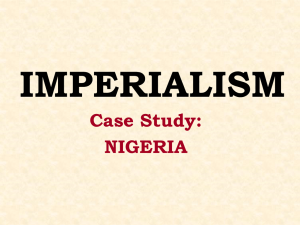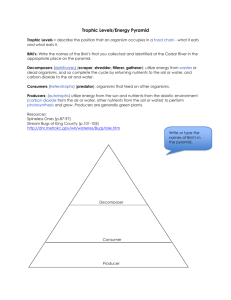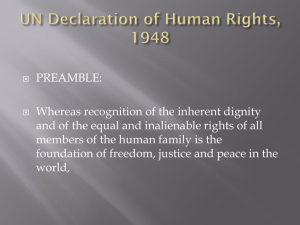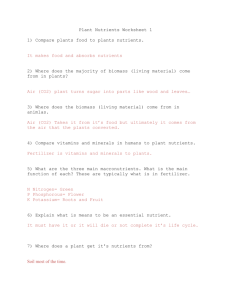REsearch Paper on Malnutrition
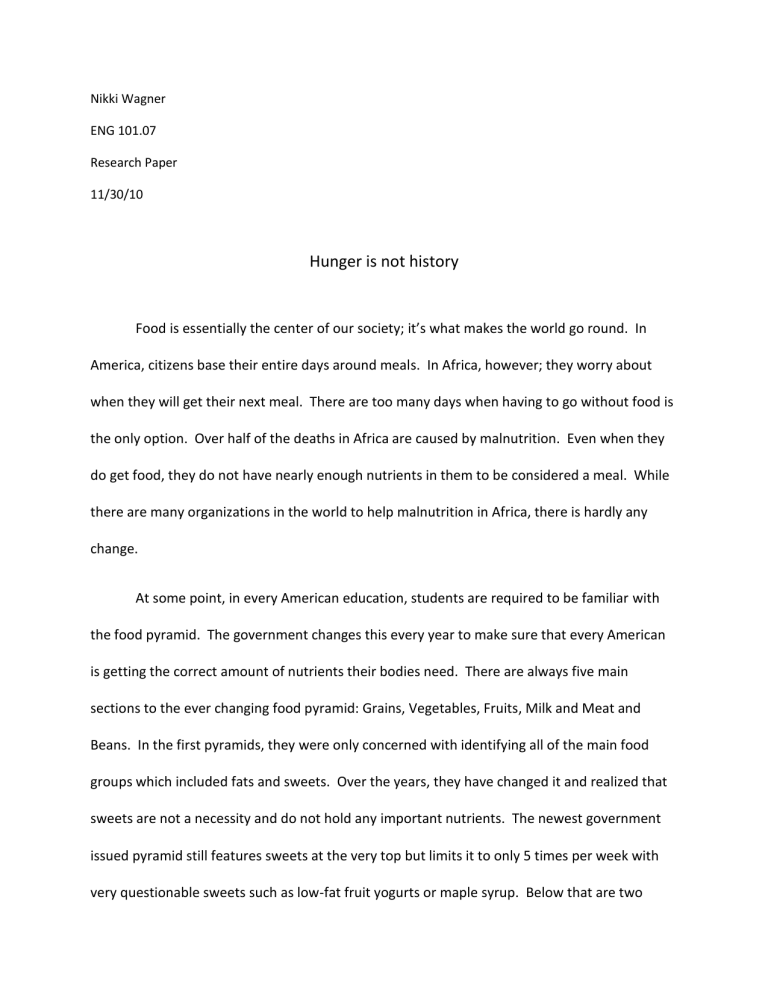
Nikki Wagner
ENG 101.07
Research Paper
11/30/10
Hunger is not history
Food is essentially the center of our society; it’s what makes the world go round. In
America, citizens base their entire days around meals. In Africa, however; they worry about when they will get their next meal. There are too many days when having to go without food is the only option. Over half of the deaths in Africa are caused by malnutrition. Even when they do get food, they do not have nearly enough nutrients in them to be considered a meal. While there are many organizations in the world to help malnutrition in Africa, there is hardly any change.
At some point, in every American education, students are required to be familiar with the food pyramid. The government changes this every year to make sure that every American is getting the correct amount of nutrients their bodies need. There are always five main sections to the ever changing food pyramid: Grains, Vegetables, Fruits, Milk and Meat and
Beans. In the first pyramids, they were only concerned with identifying all of the main food groups which included fats and sweets. Over the years, they have changed it and realized that sweets are not a necessity and do not hold any important nutrients. The newest government issued pyramid still features sweets at the very top but limits it to only 5 times per week with very questionable sweets such as low-fat fruit yogurts or maple syrup. Below that are two
sections; Beans, Nuts and Seeds and Oils, Salad Dressing and Mayo. The serving sizes for these are no more than a ½ cup of cooked beans down to teaspoons of mayonnaise.
Below the Beans and Salad Dressings, in the middle of the pyramid are Low-fat dairy products and Seafood, Poultry and Lean meats. On earlier pyramids there were no “low-fat” or
“lean” products. It was simply dairy and meat. Taking up a whole bar, under the dairy and meat sections is the Grain category. A serving consists of a slice of bread, ½ cup dry cereal and
½ cup cooked pasta. Labeled under the word grains are the words “preferably whole”. At the very bottom of the pyramid, considered the most important, is the Vegetables and Fruits category. The serving sizes for each are about 2 cups of each.
Considering all of the food pyramid requirements, there are a lot of very specific and detailed guidelines. It shows the type of product, the measurements for each item and how many recommended servings a day. Most Americans do not meet these requirements during a normal day. Although they have the resources and the ability to, they simply do not. Citizens in
Africa are similar to Americans because they do not meet the requirements either. The difference is that they do not have any way to possibly reach them. “Africa contains the population with the highest proportion of undernourished people in the world…” (par. 4.
Anonymous) Most Africans can barely provide three meals a day that Americans are so accustom to. Thousands, if not millions, of Africans go hungry every day because there was simply no food that day. Most Americans consume an average of 2000 calories a day, as you can imagine, in Africa the number is significantly lower.
Hunger is not a choice. Eating is not just one of those things you can go without, like a car. You don’t need one but it’s nice to have, and convenient. It’s a worldwide fact, no matter your religion or culture or social status, people need food. They don’t need it just to be full, but for all of the nutrients it contains. “A nutritious, balanced school lunch for every child is the best investment we can make in health.” (par. 5. p 26. McGovern) Vitamin and mineral plays a certain role in the body and without them there will be serious health problems.
Within the first five years of life, nutrients are vital to survival. Infants and children require a certain amount of vitamins and minerals to live. Luckily within the first few months they are able to get food through breast milk. The problem with that in Africa is, if the mothers are not getting enough nutrients they aren’t able to pass them to their children. Although there are TONS of vitamins and minerals out there, there are a few with extremely important side effects during deficiency. If a human does not have enough Vitamin D or Calcium, often found in dairy and fish products, children suffer from rickets and adults from osteoporosis. A deficiency in Phosphorus, such as milk, grains and lean meats, causes weakness, bone pain and
Anorexia. A shortage of magnesium – Pumpkins, Nuts and Soybeans- leads to muscle weakness, cramps and cardiac arrhythmias. Because Africans obviously cannot obtain all of these vitamins and minerals, they have all of these symptoms and more. The biggest concern is the lack of protein. Protein helps with the growth and repair of bones, skin, ligaments, tendons, hair and other tissues. It also creates the antibodies that help to fight infection when a person is sick. Because many Africans eat Sorghum, they are not getting the protein they need.
The main cause of malnutrition in Africa is poverty. With few Africans going to school, they aren’t educated enough to get a decent job and without the job there is no money for food. A lot of Africans are also illiterate, contributing to the lack of work. The problem is not the lack of food; it is the absence of distributing it. By distributing food evenly we could solve two problems: Hunger and Obesity. “the world now produces a quantity of grain that, if distributed evenly, would provide everyone with 3,500 calories per day, more than enough for an optimal diet.” (Par. 1 McGovern) It has been researched enough to let people know that we have enough resources to fix the problem, but we have yet to do anything about it.
Instead of food for thought, we should have thought for our food. Many food consumers don’t even think about starving children while they’re eating. While thousands, if not millions, of our soldiers are over in countries that we don’t need to be in, Africans are dying from a bigger problem. More people die from hunger than wars. Africans need to be getting the correct amount of vitamins and minerals every day in order to survive. It is possible but it will take a lot of cooperation from the government and time. The problem is it needs to be a priority first.
Work Cited
Anonymous. “ Resolve needed to fight African hunger.” Appropriate Technology. Dec 2008. 35,
4 ABI/INFORM Global. Web. 30 Nov. 2010
McGovern, George. “The real cost of hunger.” United Nations Chronicle. Sep-Nov 2001 38, 3.
Web. 30 Nov. 2010


